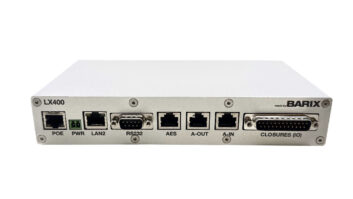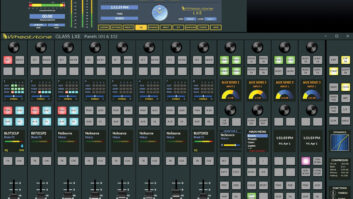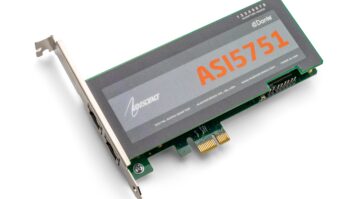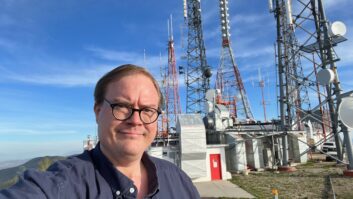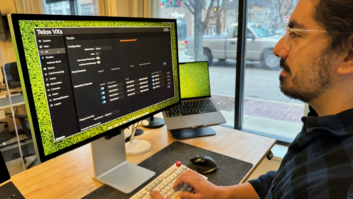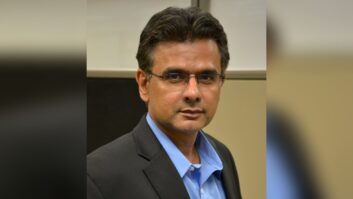We’ve all had to deal with the triple constraint rule of project management: “Of schedule, price and quality, we can have any two but never all three.” You have to pick the two most important and tolerate the loss of the third.

Credit: iStockphoto/OOKdesign
Greg Shay, chief technical officer of the Telos Alliance, challenged that axiom in a spring NAB Show presentation in the Broadcast Engineering and Information Technology Conference, aimed at both radio and TV technical audiences.
Shay qualified his claim saying it was only possible in special cases, but that includes the recently adopted AES67 standard for audio over IP.
“Audio over IP intentionally leveraged R&D and technology from the much larger IT industry,” he said. The challenge, he said, became figuring out how to use standard IT equipment for professional audio.
While competing vendors in the AoIP space mostly use standard IT industry switches for their AoIP networks, they have rolled their own largely proprietary implementations for the rest of the hardware component designs needed to deploy AoIP in a functioning network of studios and connected devices. Routers and mixing consoles of one manufacturer will not work as plug ’n’ play with those of another manufacturer in the same operation as the industry had always been able to do in analog and AES3 platforms.
Shay said the power of AES67 helps put an end to that frustration: “The barriers of competing AoIP vendors are eliminated by the use of the AES67 industry standard. Thus technology and vendor cooperation are aligned.”
Faster — AES67 allows AoIP products to work faster since they are software-based, enabling quick and easy reconfiguration, rapid prototyping, development and deployment. The total cable count is vastly reduced when designing and building new facilities. And the use of fiber optics brings much easier capacity upgrades as facilities grow.
Cheaper — Shay argued that since “time is essentially money,” faster becomes cheaper. At the heart of the AES67 standard is the ability for manufacturers and end users to deploy “high-volume standard IT switches, rather than expensive custom (TDM-based) audio routers.” Most AoIP vendors prior to AES67 based their software and hardware component implementations on proprietary designs. AES67 allows AoIP audio to convey through any standard IT Ethernet switch to any manufacturer’s AoIP to AES3 or analog audio interface equipment.
The broadcast industry is tiny compared to the IT industry and the other industries it serves. The use of high-reliability IT network equipment is driven by many critical industries. AoIP under AES67 enables broadcasters to harness that hardware advantage in new ways. Deployment can be implemented on virtualized servers and regularized hardware. Online monitoring, diagnosis and easier maintenance come along as a bonus.
Better — AES67 extends the advantages of digital audio over ancient and inefficient analog but also moves beyond the limitations of AES3. Shay listed ways it is better:
• Pristine professional digital audio quality.
• No interference, hum, buzz or grounding problems.
• Reduction / elimination of audio cables.
• Seamless integration of local and remote contribution & production.
• User-friendly. Operator friendly. Journalist / reporter friendly.
• Able to create redundant audio connections, with scalable additional resources (from low to full).
• All data is CRC protected. Corrupt data always known.
• Synchronization, control, audio all on the same wire.
• Smarter systems use some of their power to catch, diagnose and recover problems.
SIP PROTOCOL
Shay described how Session Initiated Protocol as a basic component of the IP communications universe is shared in AES67.
The use of SIP is a valuable innovation in AES67 that is not possible in existing AoIP systems. He cited the example of a studio tech trying to figure out why an audio mic feed was missing in a typical studio router/console operation where the talent was waiting patiently in another studio. SIP offers 45 ways to diagnose the situation quickly and tell where such a problem lies.
Shay stated that “SIP represents a big step forward in the technology of making connections. This can include sophisticated features like forwarding and following, parking a connection to be picked up somewhere else, allowing a proxy to redirect, and as in the example, detailed system self-diagnostics.”
He added, “As systems get smarter and more powerful, some of that power needs to be used for self-checking, self-analysis and self-diagnosis. Sophisticated system design should mean simpler operation for the users.”
AN AES67 WARNING
Shay believes that real AES67 interoperability must be implemented like the worldwide cellular telephone system.
“The AT&T, Verizon, T-Mobile, Vodafone, EE , KPN, O2 networks can all connect to each other no matter what phone model is used: Apple, Android, Motorola, Nokia, HTC, Samsung … they can all talk to each other.”
However, many popular communications platforms on the internet do not talk to each other: Skype, Google Hangouts, FaceTime, GoTo Meeting, WebEx for example. “Shouldn’t it be simple to Skype to a Facetime person?” he asked.
The kicker: All of these share common underlying network protocols, otherwise they could not be carried over the same network.
Shay identified the problem as “app disease:” Vendors using an app to control the customer base. “AES67,” he continued, “is a technology standard, not an app.”
He cautioned users involved with deployment of products using AES67: “Don’t let your products be restricted by one particular AES67 control application, or one vendor’s way of working. AES67 technology providers must have their implementations open and flexible, with multiple ways to be controlled and configured, including simple manual configuration.”
Shay concluded with advice for users and those contemplating purchase of AoIP equipment for their facilities: “Work with vendors who themselves are strong companies tuned into the creation, use and promotion of industry standards and have been doing so for long enough to deliver with experience and excellence.”
Comment on this or any story to [email protected].
Tom McGinley is Radio World’s technical advisor. He is a veteran radio broadcast engineer with Townsquare Media.





